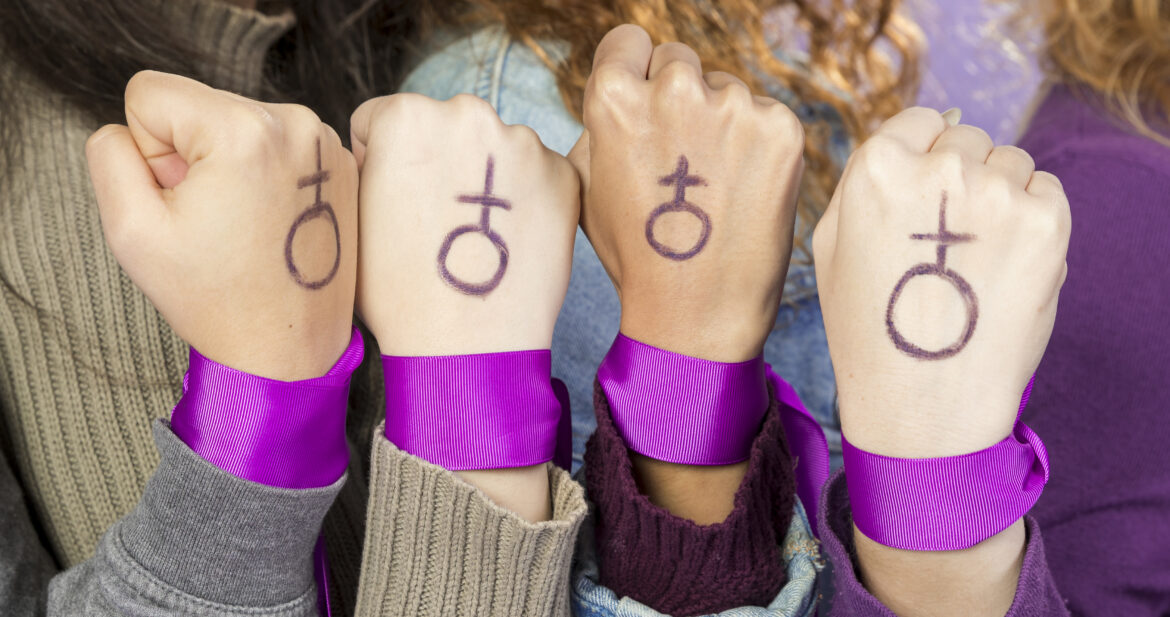Curious about feminism but overwhelmed by the buzzwords? This quick and easy guide breaks down the most important feminist terms you need to know in 2025—from allyship and intersectional feminism to the gender pay gap and emotional labor. Whether you’re just starting your journey or want to brush up on modern feminist terminology, this article makes complex ideas simple and relatable. Learn how language shapes equality, and why understanding inclusive terms is key to meaningful change. Start here and empower your conversations with clarity and confidence.
Key Takeaways
- Feminism is about equality for all genders, not superiority.
- Modern feminist terminology explained clearly helps foster better conversations.
- Concepts like intersectional Feminism, allyship, and body autonomy are essential in 2025.
- Understanding privilege, emotional labor, and gaslighting supports healthier relationships.
- A grasp of the updated glossary of feminist terms empowers informed advocacy and dialogue.
Feminism in 2025 is as dynamic and diverse as ever. With evolving conversations around gender, identity, and equity, understanding the language of Feminism is key to creating inclusive spaces and meaningful change. Whether new to the movement or looking to refresh your knowledge, this guide will walk you through the key gender equality terms used in 2025.
From the basics like the “gender pay gap” to more nuanced concepts such as “intersectional feminism” and “allyship,” this updated glossary of feminist terms offers simple, accessible explanations for everyone. Let’s break down each term to help deepen your understanding and empower thoughtful dialogue.
What Is Feminism?
Feminism is the belief in and movement toward achieving full social, political, and economic equality for all genders. At its core, feminism challenges the systems and structures that have historically prioritized men—especially cisgender, heterosexual men—while excluding or disadvantaging women, non-binary people, and other marginalized genders.
Importantly, feminism does not mean placing women above men. Instead, it seeks to create a world where everyone, regardless of gender, has equal opportunities, rights, and respect. In 2025, feminism has evolved to focus more on inclusivity, recognizing how issues like race, class, sexuality, and disability intersect with gender.
Modern feminism also works to:
- Eliminate gender-based violence
- Close pay and leadership gaps
- Support reproductive and bodily rights
- Challenge harmful stereotypes and social expectations
Inclusivity, intersectionality, and global perspectives. It recognizes that people experience gender inequality in different ways depending on factors like race, class, sexuality, and disability. Knowing the modern feminist terminology explained in this guide is essential to participating in this ongoing movement.
1. Allyship
Allyship refers to the active, consistent practice of using privilege to support and uplift marginalized groups. In Feminism, this means men, or anyone in a position of relative privilege, listening, learning, and taking action to support gender equity without dominating the conversation.
An ally does not just claim the label—they earn it through behavior:
- Amplifying underrepresented voices
- Taking feedback without defensiveness
- Standing up against sexism in everyday settings
Allyship is not about perfection; it’s about being present and committed to change. In 2025, this concept will deepen in meaning, especially as allies are expected to be informed and engaged.
2. Equity vs. Equality
While often used interchangeably, equity and equality are not the same.
- Equality means giving everyone the same resources or opportunities.
- Equity recognizes that individuals have different needs and circumstances, and it involves distributing resources based on those differences to achieve a fair outcome.
Equity is prioritized in feminist discourse because it takes into account structural inequalities. For example, a workplace may have gender equality in hiring practices, but equity involves ensuring all employees feel safe, supported, and able to succeed. This distinction is foundational in understanding inclusive language in feminist discourse.
3. Intersectional Feminism
Coined by Kimberlé Crenshaw, intersectional Feminism acknowledges that people face multiple, overlapping forms of discrimination based on their gender, race, class, ability, and more.
Rather than treating gender inequality as a single issue, intersectional Feminism considers how different identities combine to shape unique experiences. For instance:
- A Black woman may face both racial and gender discrimination.
- A trans woman of color may encounter transphobia, racism, and sexism simultaneously.
In 2025, intersectionality will be central to most feminist movements, making it one of the most crucial key gender equality terms used in 2025. It will ensure that no one is left out of the conversation or the solutions.
4. Gender Pay Gap
The gender pay gap refers to the average difference in earnings between men and women. Despite advances, this gap will still exist worldwide in 2025. It’s not just about unequal pay for the same job (which is illegal in many places) but also about systemic issues like:
- Women being underrepresented in leadership roles
- Caregiving responsibilities disproportionately fall on women
- Bias in hiring and promotion
Understanding the gender pay gap involves looking beyond surface numbers to the structural causes of income inequality. Feminists advocate for transparency, wage audits, and policy reform to address this gap.
5. Toxic Masculinity
Toxic masculinity describes cultural norms that pressure men to behave in ways that are emotionally repressive, aggressive, or dominant. It doesn’t mean that itself is toxic, but rather that certain expectations can harm everyone.
Examples include:
- Encouraging boys not to cry or express emotions
- Believing men must always be in control
- Shaming vulnerability as a weakness
Feminism in 2025 includes addressing these harmful norms, promoting emotional literacy, and encouraging healthier expressions of masculinity. It creates a safer and more equitable table for all genders.
6. Privilege
Privilege is the unearned advantages some people have because of characteristics like their gender, race, or economic status. For example, in many societies, men have more access to power and are less likely to experience gender-based violence.
Recognizing privilege is not about guilt; it’s about awareness. If you don’t face a particular form of discrimination, you can use your position to help dismantle the barriers others face. Privilege intersects with other identities, which is why it’s a recurring concept in intersectional Feminism.
7. Misogyny vs. Sexism
Though related, misogyny and sexism are not identical.
- Sexism is any discrimination or prejudice based on gender, typically against women.
- Misogyny is a more bottomless contempt or hatred toward women, often expressed through violence, harassment, or systematic exclusion.
In feminist discussions, understanding this distinction helps identify the severity and intent behind different behaviors. For instance, assuming a woman is less competent might be sexist, but silencing or punishing her for speaking out could stem from misogyny.
8. Gaslighting
Gaslighting is a psychological manipulation tactic that makes someone doubt their reality or feelings. While not exclusive to feminist issues, it is a frequent topic in conversations about abuse, particularly emotional abuse in relationships or workplaces.
Examples include:
- “You’re just too sensitive.”
- “That never happened.”
- “You’re imagining things.”
In 2025, gaslighting is widely recognized as a form of emotional control. Feminists raise awareness about this behavior, especially in discussions about mental health, relationships, and workplace dynamics.
9. Consent
Consent means giving voluntary, enthusiastic, and informed agreement to something—especially in sexual contexts. In modern feminist discussions, consent is:
- Clear and mutual
- Can be withdrawn at any time
- Must not be coerced or assumed
In 2025, consent education expanded to include digital spaces (like sexting), power dynamics, and ongoing relationships. Feminism insists that understanding and respecting consent is fundamental to human dignity and safety.
10. Body Autonomy
Body autonomy is the right to make decisions about one’s own body without external control. It includes issues like:
- Reproductive rights
- Access to contraception or abortion
- Choosing how to present oneself (clothing, surgery, identity)
Body autonomy remains central to feminist activism. It’s about respecting individual choices and resisting laws or norms that restrict bodily freedom. In 2025, it will also cover gender-affirming care and the fight against medical discrimination.
11. Patriarchy
Patriarchy is a social system where men hold primary power in roles of leadership, moral authority, and social privilege. It doesn’t mean that all men are oppressors, but that society has historically been structured in a way that favors men—especially cisgender, heterosexual men.
Feminists seek to challenge patriarchal norms that limit the potential and safety of all genders. Patriarchy can manifest in:
- Wage gaps
- Gender-based violence
- Unequal domestic expectations
Understanding inclusive language in feminist discourse starts with recognizing how patriarchal systems shape our world.
12. Emotional Labor
Emotional labor is the unpaid work of managing feelings, soothing others, or maintaining social harmony. Women and marginalized people are often expected to do more emotional labor, both at home and in professional environments.
Examples include:
- Being expected always to smile or be polite
- Mediating conflicts in teams
- Remembering birthdays or organizing office parties
While emotional intelligence is valuable, the unequal expectation for women to provide this labor contributes to burnout and stress. Feminism in 2025 includes advocating for shared emotional responsibility.
Conclusion
Language shapes the way we think, feel, and act. In 2025, being fluent in key gender equality terms used in 2025 is more important than ever. This guide is designed to help everyone—whether you’re a student, educator, parent, or professional—engage in conversations that matter.
By understanding inclusive language in feminist discourse, we make room for empathy, action, and lasting change. Remember, learning is ongoing. Keep asking questions, listening, and staying open to growth. Feminism is not just a movement; it’s a mindset of justice, dignity, and care.
Want to learn more?
Download our free PDF glossary or sign up for our newsletter for monthly insights into feminist terms, social justice updates, and inclusive language guides.







Leave a Reply
You must be logged in to post a comment.